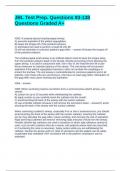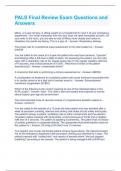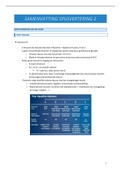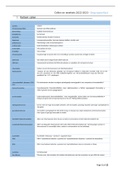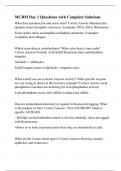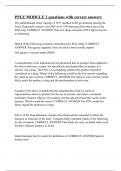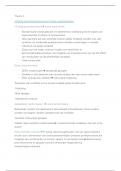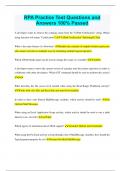Tentamen (uitwerkingen)
JBL Test Prep. Questions 93-138 Questions Graded A+
- Vak
- Instelling
JBL Test Prep. Questions 93-138 Questions Graded A+ #093: A properly placed oropharyngeal airway: A) prevents aspiration if the patient regurgitates. B) keeps the tongue off of the posterior pharynx. C) eliminates the need to perform a head tilt-chin lift. D) will not stimulate a conscious pat...
[Meer zien]
